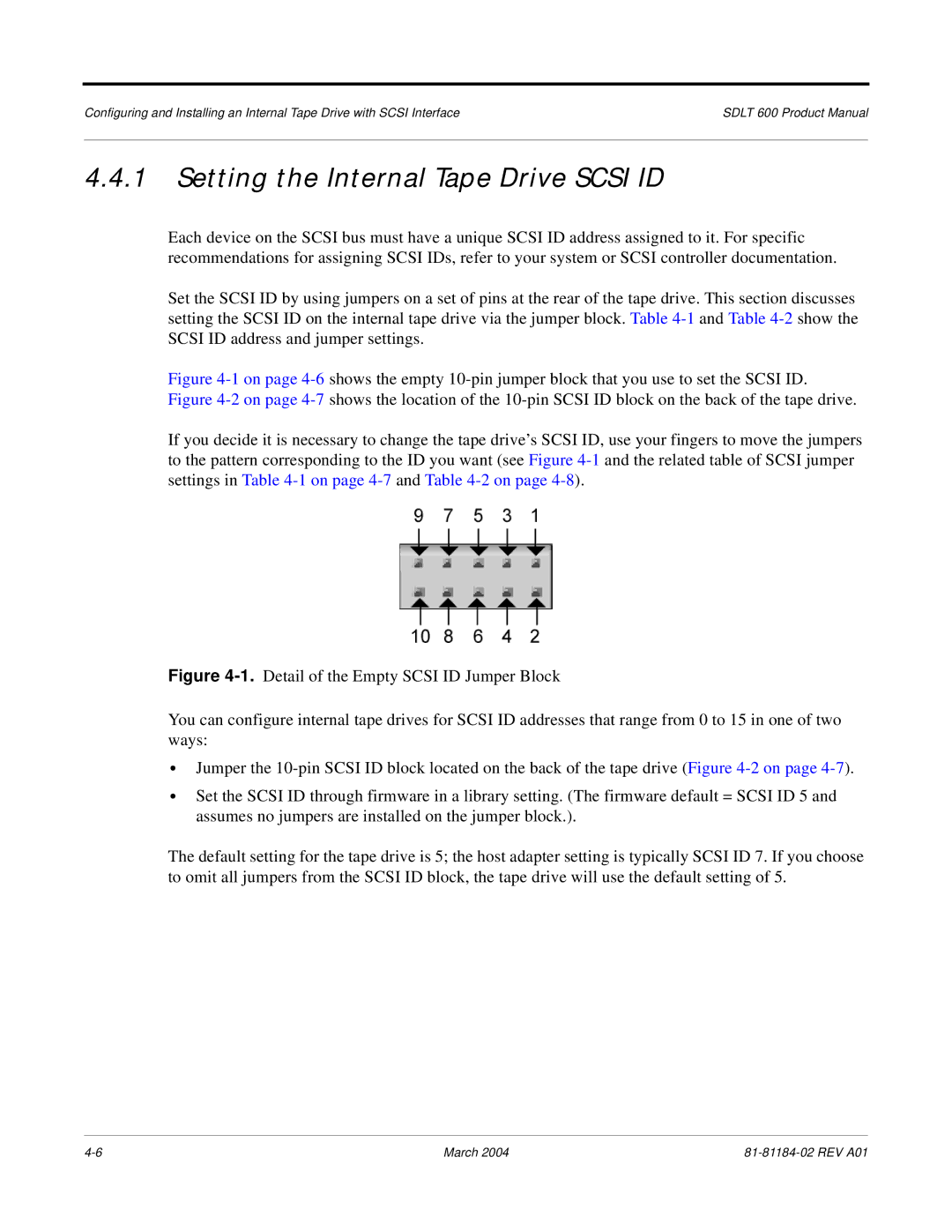
Configuring and Installing an Internal Tape Drive with SCSI Interface | SDLT 600 Product Manual |
4.4.1Setting the Internal Tape Drive SCSI ID
Each device on the SCSI bus must have a unique SCSI ID address assigned to it. For specific recommendations for assigning SCSI IDs, refer to your system or SCSI controller documentation.
Set the SCSI ID by using jumpers on a set of pins at the rear of the tape drive. This section discusses setting the SCSI ID on the internal tape drive via the jumper block. Table
Figure 4-1 on page 4-6 shows the empty 10-pin jumper block that you use to set the SCSI ID. Figure 4-2 on page 4-7 shows the location of the 10-pin SCSI ID block on the back of the tape drive.
If you decide it is necessary to change the tape drive’s SCSI ID, use your fingers to move the jumpers to the pattern corresponding to the ID you want (see Figure 4-1 and the related table of SCSI jumper settings in Table 4-1 on page 4-7 and Table 4-2 on page 4-8).
Figure 4-1. Detail of the Empty SCSI ID Jumper Block
You can configure internal tape drives for SCSI ID addresses that range from 0 to 15 in one of two ways:
•Jumper the 10-pin SCSI ID block located on the back of the tape drive (Figure 4-2 on page 4-7).
•Set the SCSI ID through firmware in a library setting. (The firmware default = SCSI ID 5 and assumes no jumpers are installed on the jumper block.).
The default setting for the tape drive is 5; the host adapter setting is typically SCSI ID 7. If you choose to omit all jumpers from the SCSI ID block, the tape drive will use the default setting of 5.
March 2004 |
